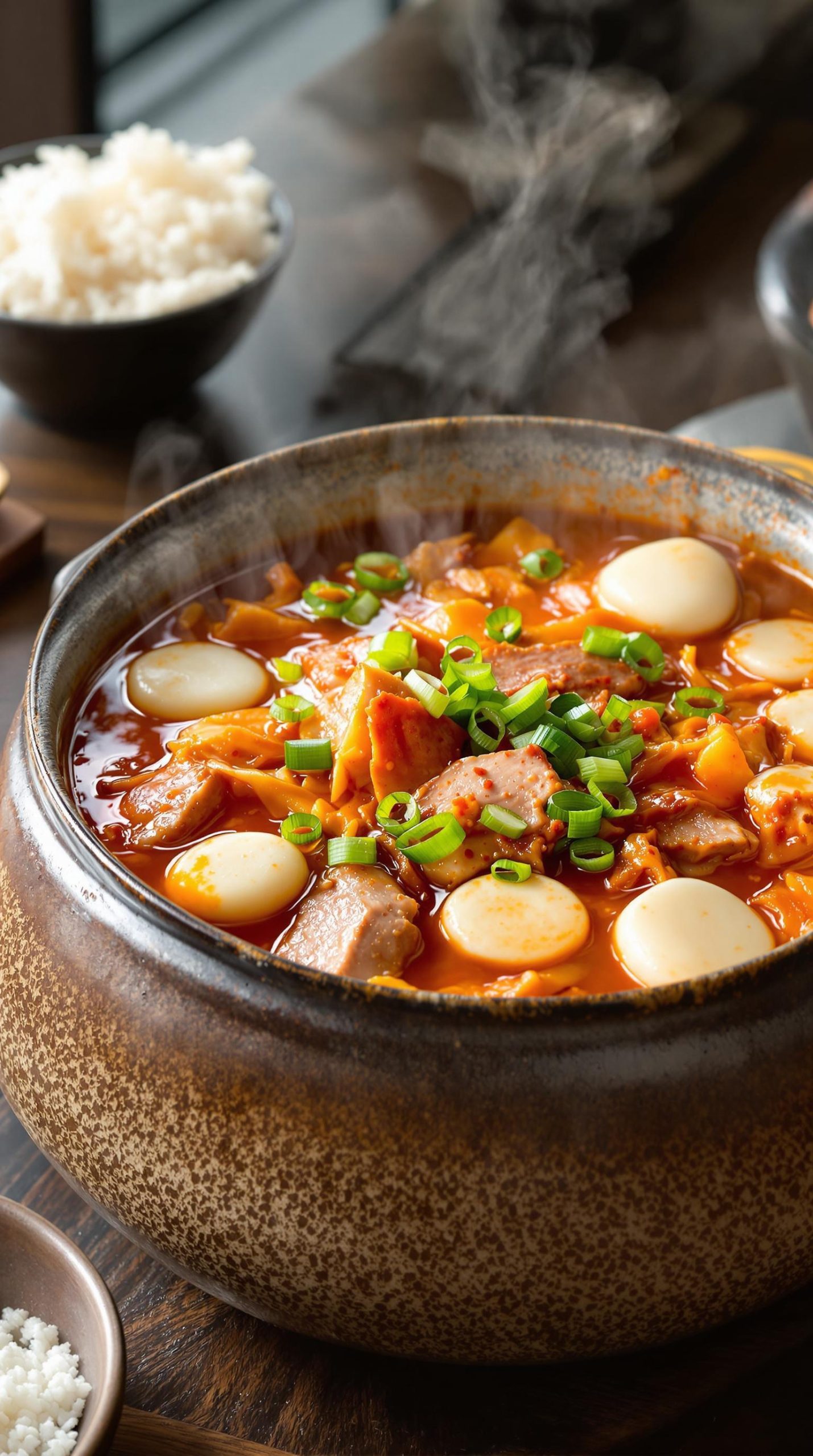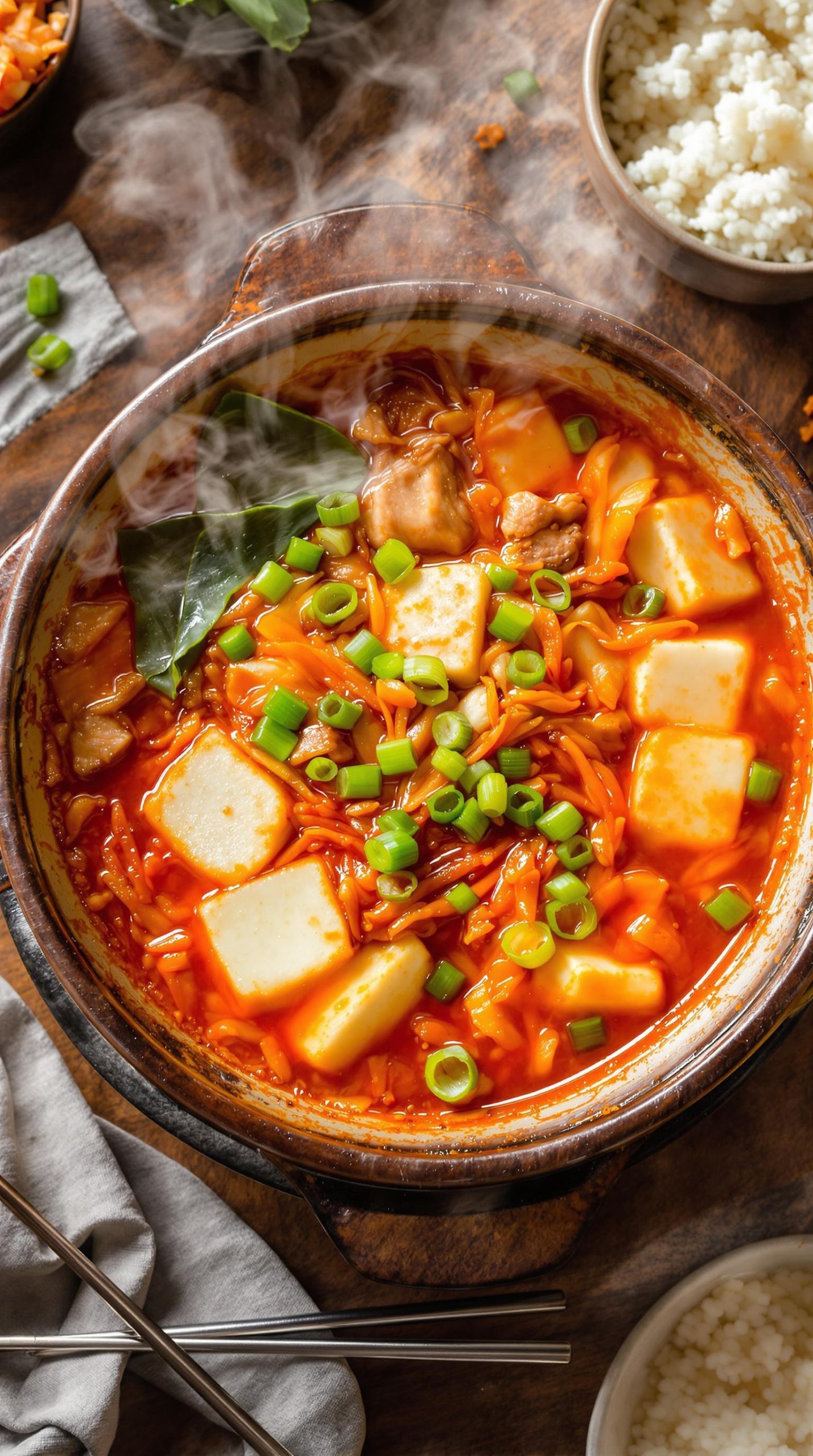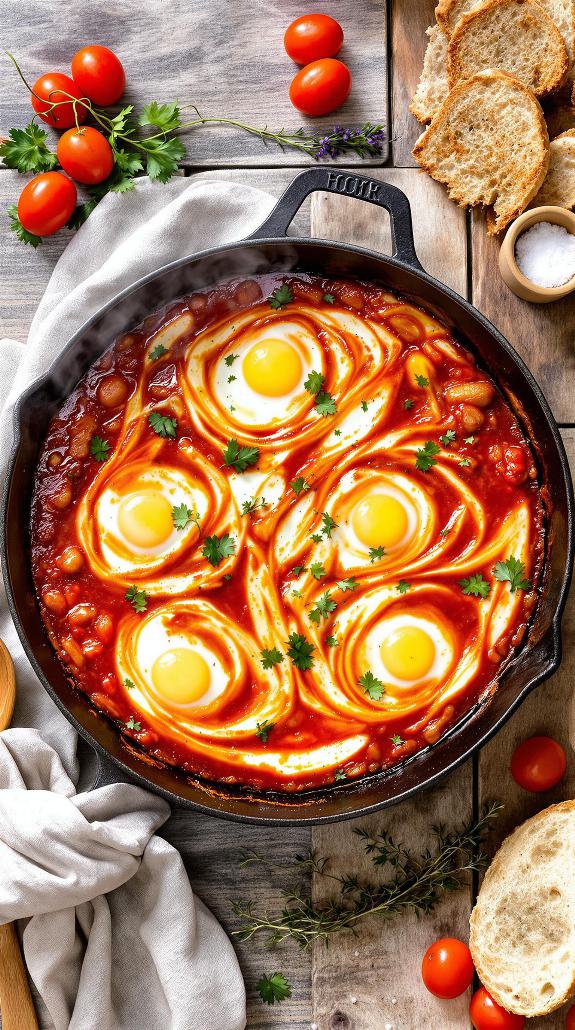Why You’ll Love this Spicy Korean Kimchi Jjigae
If you’ve never experienced the pure comfort of a bubbling pot of Kimchi Jjigae, you’re in for a life-changing meal.
This Korean stew combines the perfect balance of tangy fermented kimchi with rich pork belly and pillowy soft tofu in a spicy, soul-warming broth.
I’m obsessed with how this dish transforms ordinary kimchi into something extraordinary. The longer your kimchi has fermented, the deeper and more complex your stew becomes.
Can you imagine anything better on a chilly evening? The beauty is in its versatility too—add rice cakes for chewiness or swap pork for beef.
It’s rustic home cooking at its finest.
What Ingredients are in Spicy Korean Kimchi Jjigae?
Making a delicious pot of Kimchi Jjigae requires ingredients that build layers of flavor, from the tangy fermented kimchi to the rich pork belly. This homestyle Korean stew might look intimidating at first glance, but the ingredient list is actually quite approachable. Most items can be found at Asian grocery stores, and the combination creates that distinctive sweet-sour-spicy profile that makes this dish so crave-worthy.
- 1 ounce pork belly, sliced
- 1 cup cabbage kimchi (preferably aged/well-fermented)
- 4 slices Korean rice cakes (ddeok)
- 5 slices soft or medium-firm tofu
- 1/2 teaspoon minced garlic
- 1 teaspoon ground black pepper
- 1 teaspoon salt
- 1 teaspoon granulated sugar
- 2 cups water
- Scallions, cut into 2-inch pieces (for garnish)
- Steamed rice (for serving)
- Optional Korean side dishes (such as additional kimchi varieties, bean sprouts, etc.)
The quality of your kimchi really matters in this recipe. The older, more fermented kimchi will give your stew a deeper, more complex flavor profile. And don’t skip the rice cakes—they add that wonderfully chewy texture that makes the stew so satisfying. For vegetarians, you can easily substitute the pork belly with mushrooms or just omit it entirely, though you might want to add a bit more seasoning to compensate for the lost richness. Remember, Kimchi Jjigae is as much about the comforting experience as it’s about the ingredients themselves.
How to Make this Spicy Korean Kimchi Jjigae

Making authentic Kimchi Jjigae starts with rendering the fat from 1 ounce of sliced pork belly in a heavy pot over medium-high heat.
Season the pork with 1/2 teaspoon black pepper and 1/2 teaspoon salt as it cooks, letting those flavorful juices release into the pot. There’s something so satisfying about watching the fat slowly melt away, creating the perfect foundation for our stew.
Once the pork is nearly cooked through, add 1 cup of cabbage kimchi and stir-fry them together, allowing the kimchi to absorb all those delicious pork flavors.
Next comes the liquid element—pour in 2 cups of water and 1/2 teaspoon smashed garlic, bringing everything to a lively boil.
When bubbling nicely, add 4 slices of oval disc-shaped Korean rice cakes (ddeok) and let the stew simmer for about 10 minutes. During this time, the rice cakes will soften and the broth will take on that signature deep red color and complex flavor.
To finish seasoning, sprinkle in the remaining black pepper and salt along with 1 teaspoon of granulated sugar, which helps balance the spicy and tangy notes.
The final touches make all the difference—gently place 5 slices of soft or medium-firm tofu on top of the stew and garnish with 2-inch pieces of fresh scallion.
Traditionally, this hearty stew is served with steamed rice and various Korean side dishes, creating a complete meal that warms you from the inside out.
Spicy Korean Kimchi Jjigae Substitutions and Variations
While traditional Kimchi Jjigae follows a time-honored recipe, this Korean comfort food welcomes creative adaptations based on what you have available.
Don’t have pork belly? Swap in bacon, ground pork, or even spam—each lending its unique flavor profile.
Vegetarians can skip the meat entirely and use mushrooms for that umami kick.
The tofu’s firmness is totally up to you.
Soft tofu creates a silky texture, while firm holds its shape better.
No Korean rice cakes? That’s okay.
The stew tastes delicious without them, or try substituting with sliced rice noodles for a similar chewy satisfaction.
What to Serve with Spicy Korean Kimchi Jjigae
No Korean meal is complete without the perfect accompaniments to balance your spicy Kimchi Jjigae.
I always recommend serving this hearty stew with a bowl of steamed white rice, which serves as the perfect canvas to soak up that rich, flavorful broth.
Traditional banchan (side dishes) are non-negotiable in my book—think fresh kimchi varieties like cucumber or daikon radish kimchi, plus some bean sprouts or watercress for a revitalizing crunch.
The combination of hot stew, fluffy rice, and cold banchan creates that magical temperature contrast that makes Korean cuisine so satisfying.
Trust me, your taste buds will thank you.
Final Thoughts
Kimchi Jjigae stands as one of Korea’s most beloved comfort foods for good reason. This hearty, spicy stew transforms humble ingredients into something truly magical – the kind of dish that warms you from the inside out on a chilly evening.
I’m convinced that the key to exceptional jjigae lies in balancing those fermented kimchi flavors with the richness of pork belly and the subtle sweetness that ties everything together.
Don’t you love how the rice cakes add that wonderfully chewy texture?
Make this stew part of your cooking repertoire, and you’ll never regret having a container of aging kimchi in your fridge.





